Report: DEMA 2019
Day 2
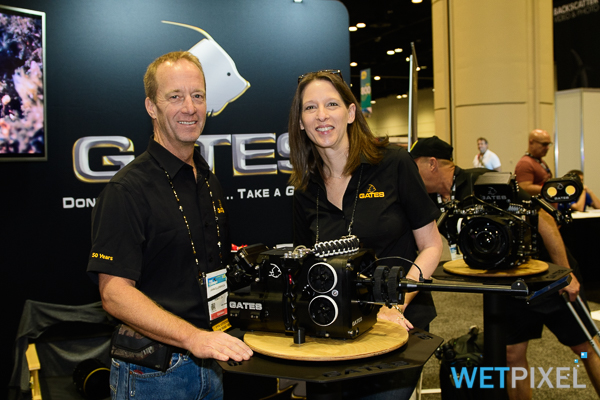
Gates
The first meeting of the day was with John Ellerbrock of Gates Underwater Products. On his booth was the Laowa 24mm probe lens integrated into a Pro Action housing.
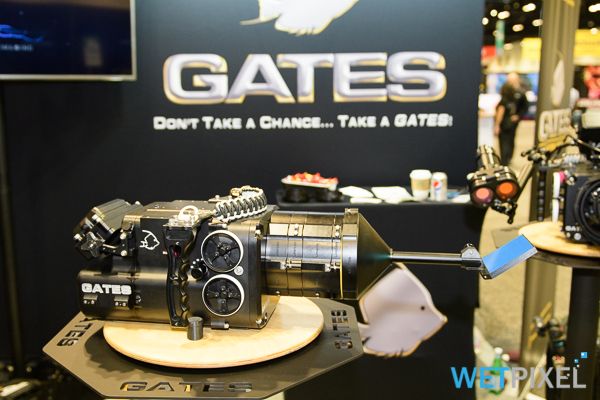
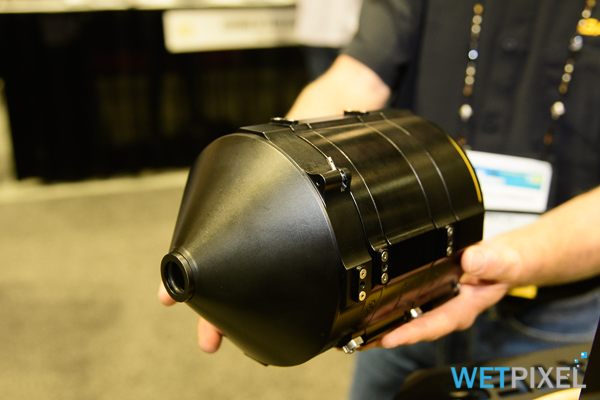
The lens attaches with a special cone-shaped port with a gland that seals around the barrel of the lens. The port attaches to the housing with a series of extensions, and zoom and iris gears are attached to the lens.
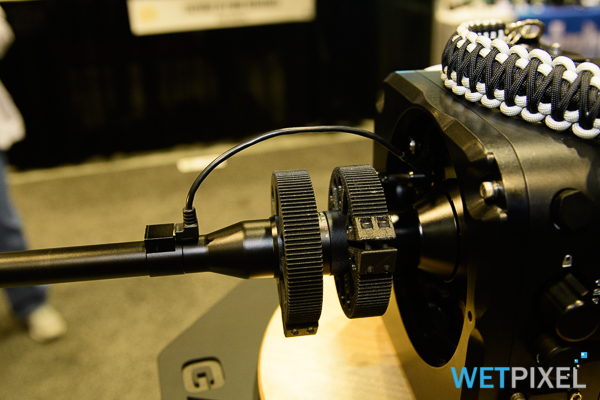
The lens has an integrated led light, which in Gates’ implementation is powered from the camera’s batteries.
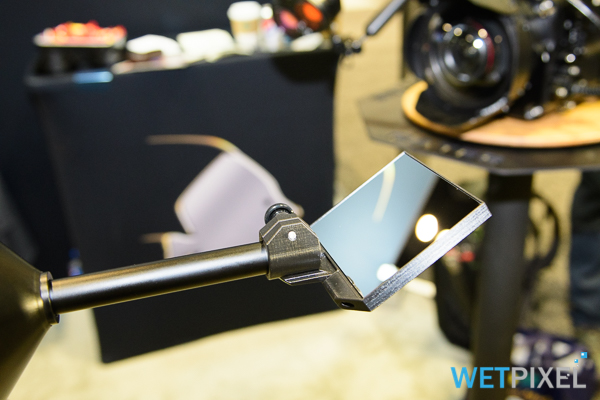
A novel idea is the attachments of a swiveling mirror to the end of the lens. This allows the user to hold the housing and lens at an angle to the bottom, increasing potential options.
John explained that Gates has decided to offer a range of port extensions rather than ports dedicated to individual lenses. The extensions are available in 6”, 8” and 11” diameters to suit lenses of varying sizes.
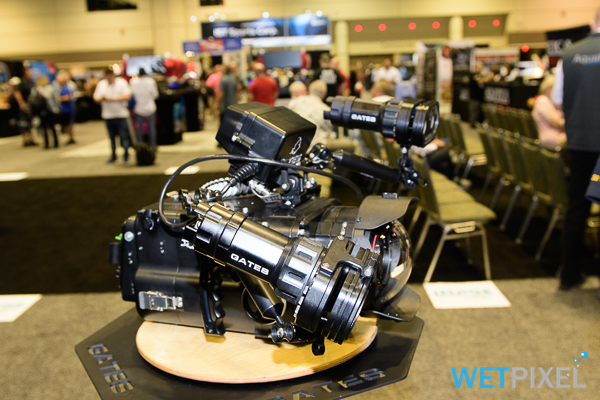
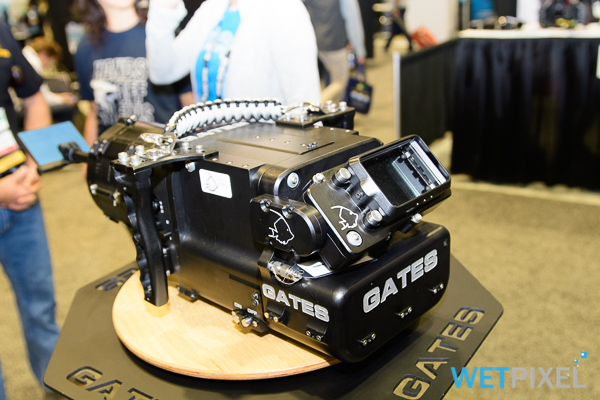
Although there were not many new products on the booth, new products in 2020 will include a range of connectors. Mong these are co-axial, ethernet, remote control, and power versions and will integrate with the standard Lemo insert.
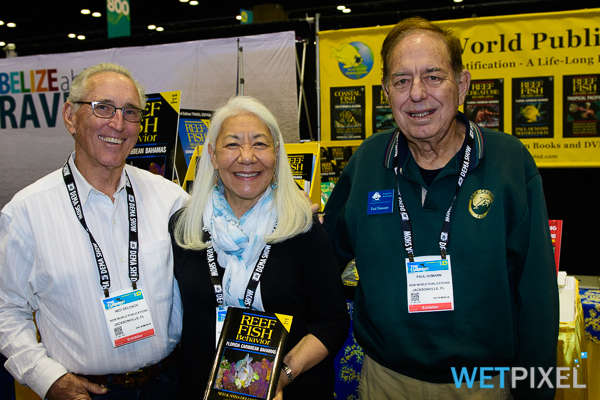
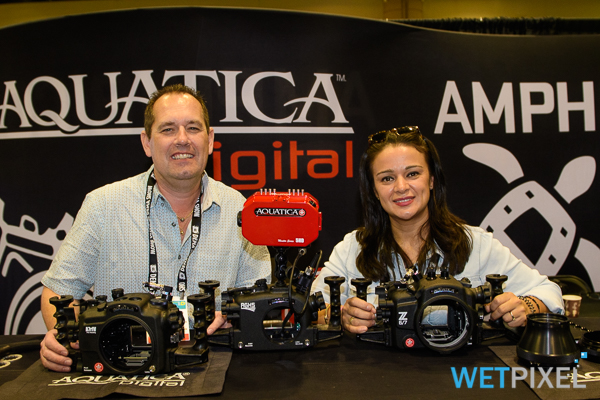
Aquatica
Next, I met with Blake Stoughton and Carolina Amaya to check out Aquatica’s new products. Blake kindly talked me through the range.
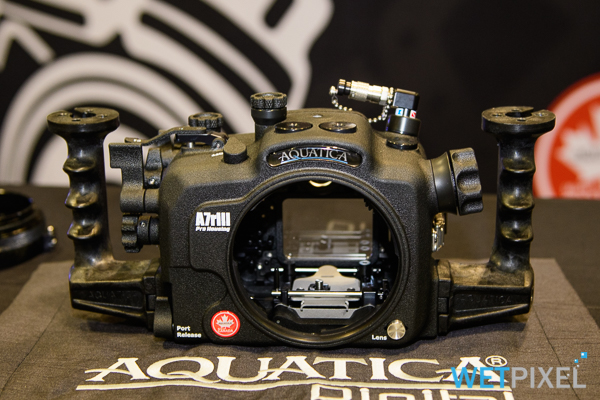
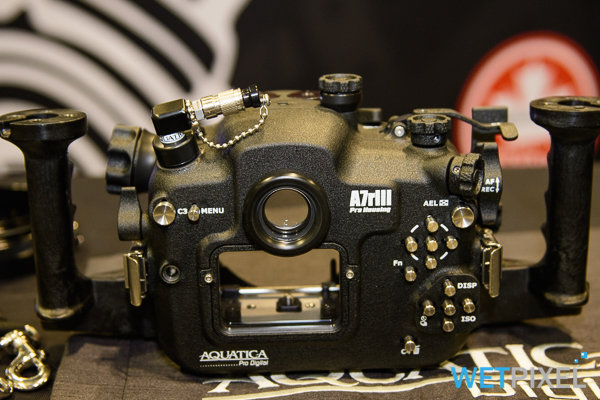
First was their housing for the Sony a7rIV. This will be shipping from early December.
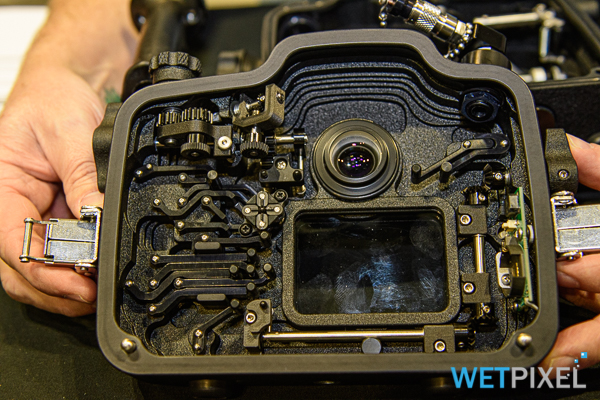
It offers spring-loaded controls that help prevent misaligned controls and a cleverly designed set of rear controls that allow the multi selector to be offset to give more room and to be closer to the right thumb.
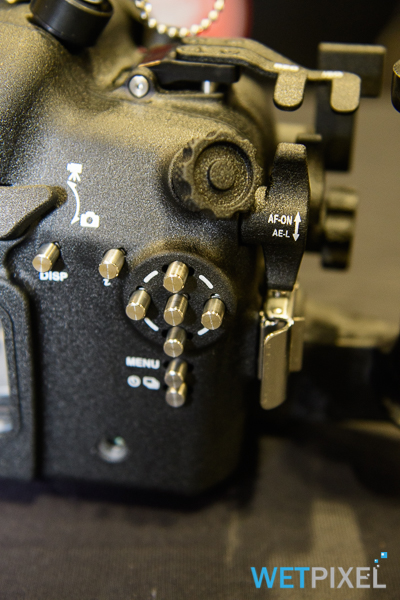
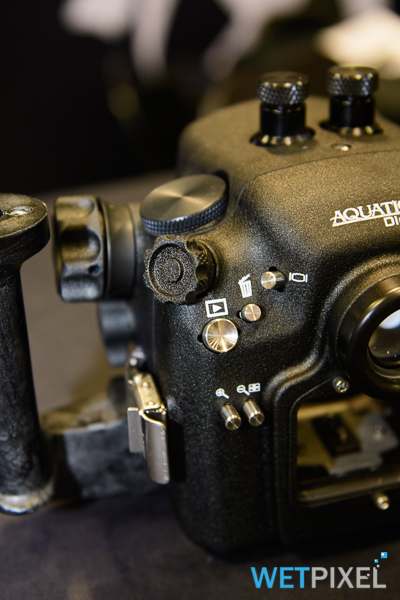
There are several controls that utilize manual servo arrangements to ensure correct alignment. These include a dual control lever for AF and REC functions and the image review lever. The housing has a large bulkhead that allows for an HDMI cable with an attached plug to pass through to allow HDMI 2.0 quality signal transmission.
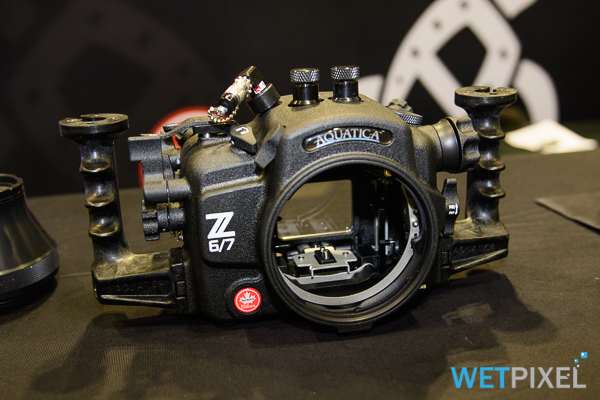
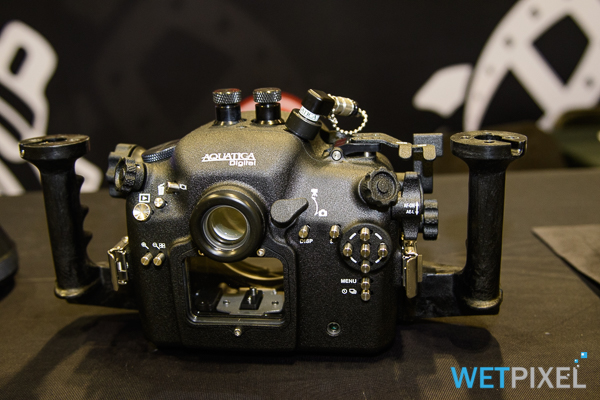
Aquatica’s housing for the Nikon Z6/7 also has the large bulkhead, along with the spring-loaded controls and mechanical servo activators.
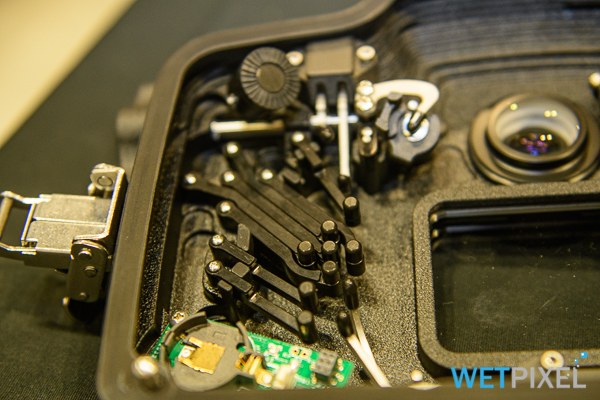
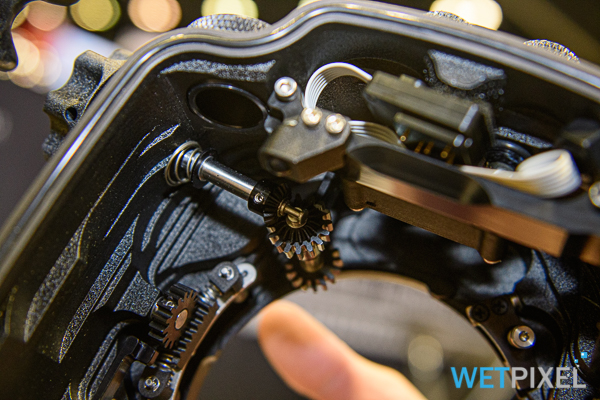

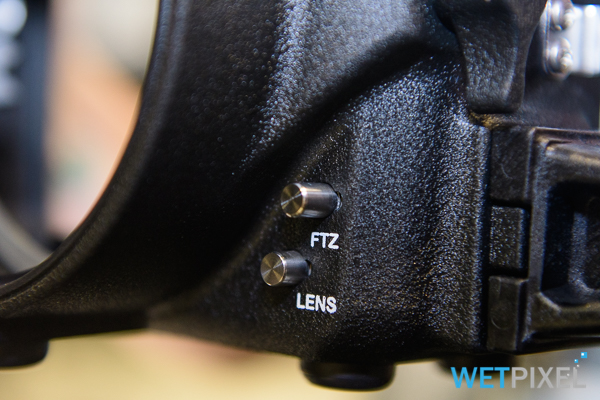
The housing is compatible with the FTZ converter. To allow for use with or without it, the housing has dual zoom/focus gears that simultaneously disengage when mounting lenses and two lens release buttons.
It can be ordered with Nikonos N5, Ikelite ICS-5, or fiber optic strobe triggering options. Perhaps uniquely, Aquatica now ships their housings with not only the vacuum circuitry fitted as standard but also with a bulkhead and pump.
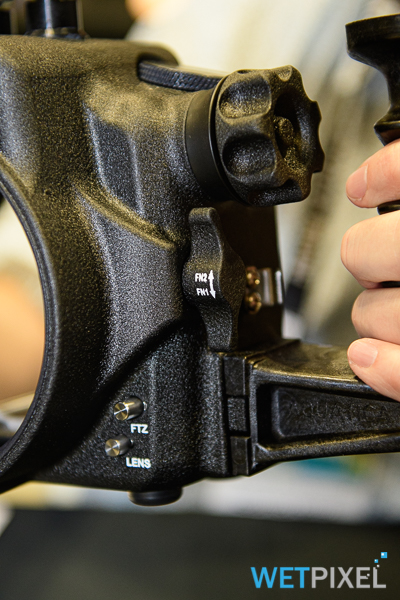
Another neat feature on the Z6/7 housing is that the FN and Pre buttons are on a lever on the right-hand side. This makes using this control to cancel flash (for silhouettes, for example) much easier.
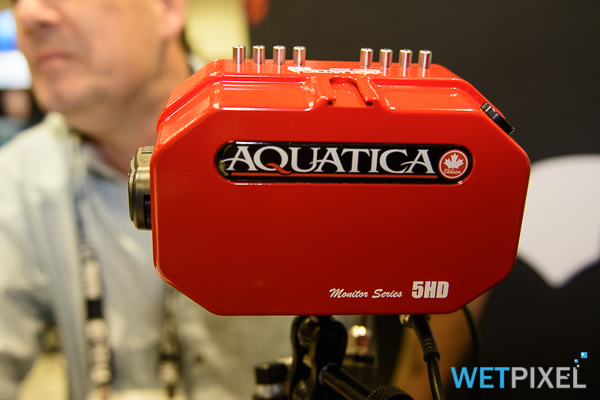
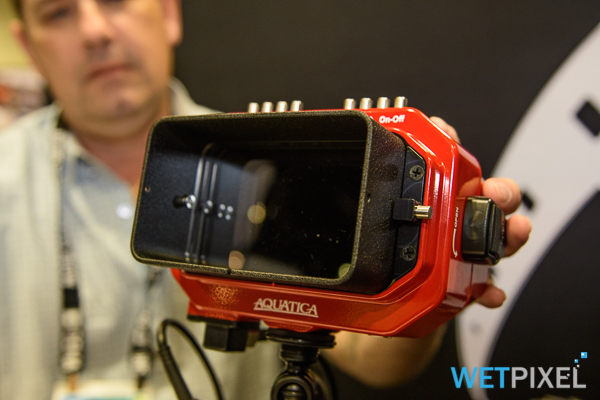
Blake then showed me their 5HD monitor. Available in both red or black, it has 5.7” IPS LED-Backlit Display and has a battery life of around 4 hours with a Sony NP-770 battery. Secured with Amphibico latches, it also has a removable sunshade that can be stowed inside the monitor housing for protection while traveling.

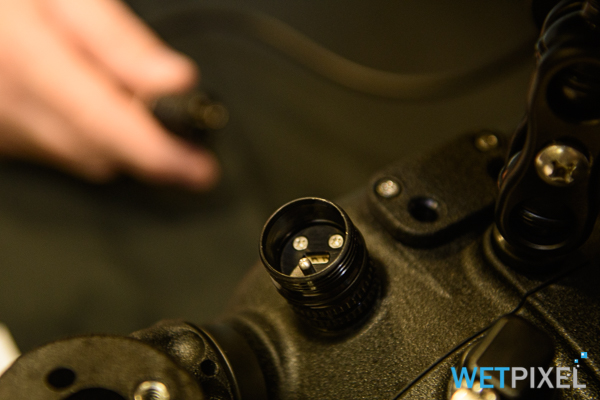
Aquatica currently offers an M16 bulkhead that allows an HDMI connection. The external connection features a guide pin and 3 O rings to ensure both sealing and to avoid droplets falling into the bulkhead.
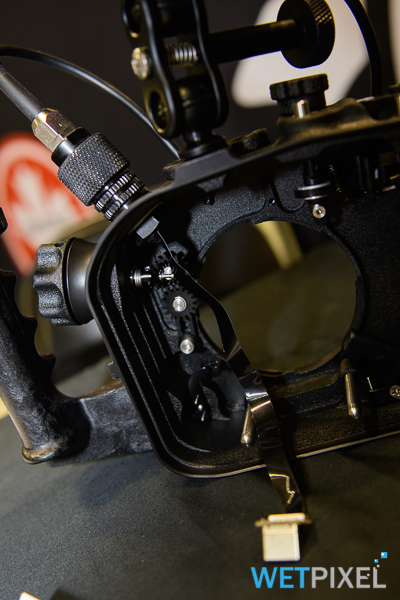
The internal ribbon cable is attached to the bulkhead, and the user can specify which type of HDMI connection is required.
Currently under development is a pass-through type connector that will fit through the larger ports that are fitted to the Sony a7rIV and Nikon Z6/7 housings. Blake reported that it would be available soon.
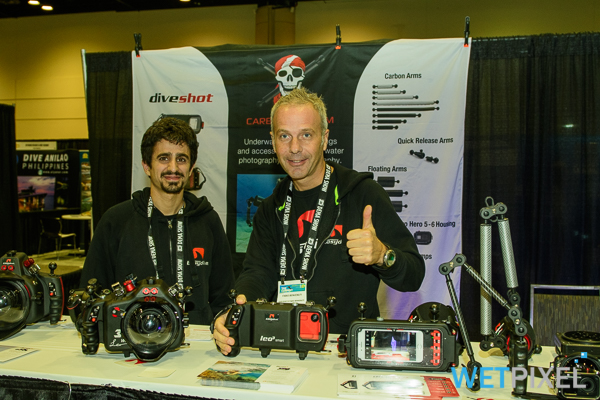
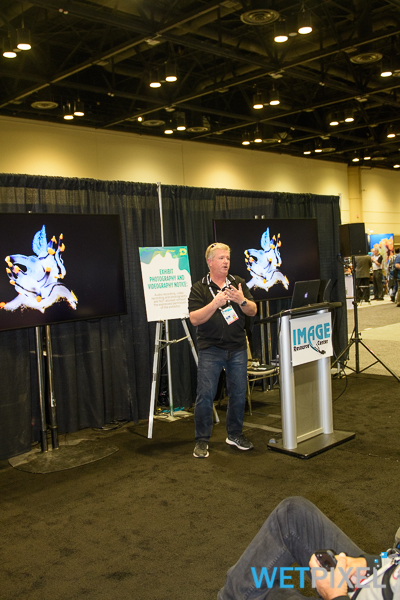
On the Imaging Resource stage, Mike Bartick of Crystal Blue spoke to a packed house.
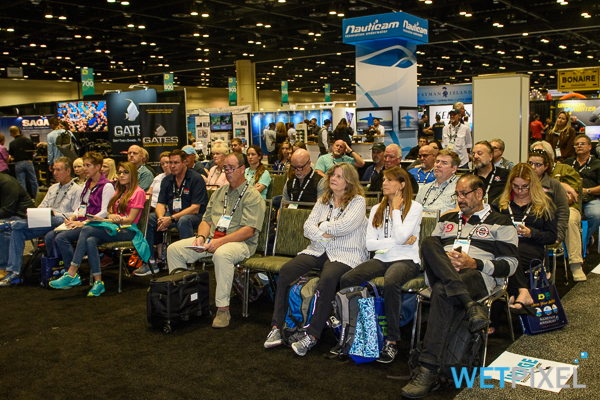
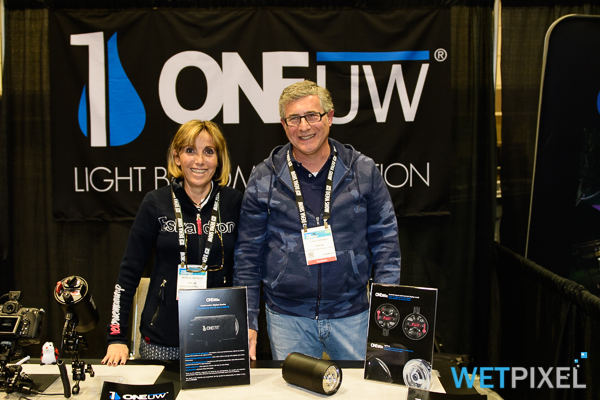
OneUW
OneUW is a new exhibitor at DEMA. Luca and Monica Carraro were showing their new ONE160X strobe.
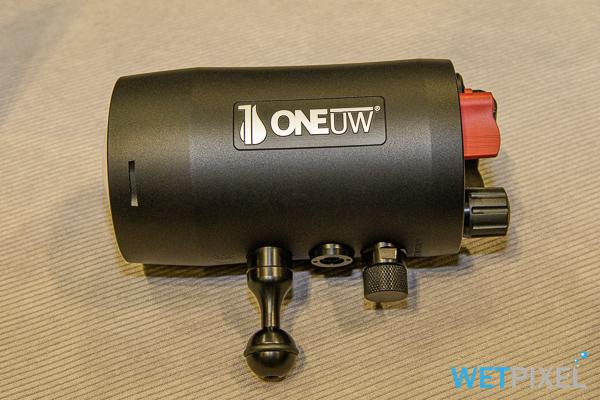
With a body, control panel, and battery compartment skid machined from solid pieces of aluminum, which is then anodized and shot blasted to give texture, before coated with a hydrophobic canon coating.
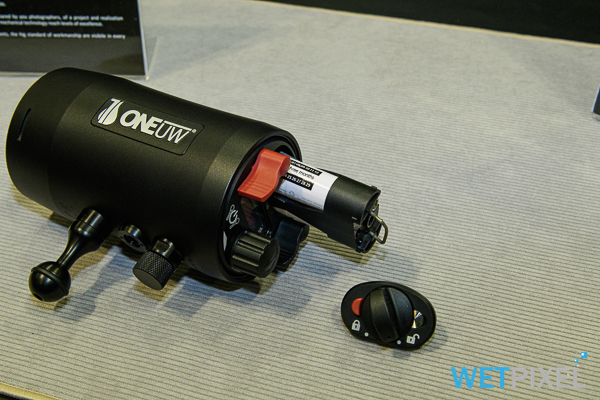
It has a sealed battery compartment and uses Panasonic batteries in a bespoke battery pack, which has a recharge time of 90 minutes. The battery offers 250 flashes at full power.
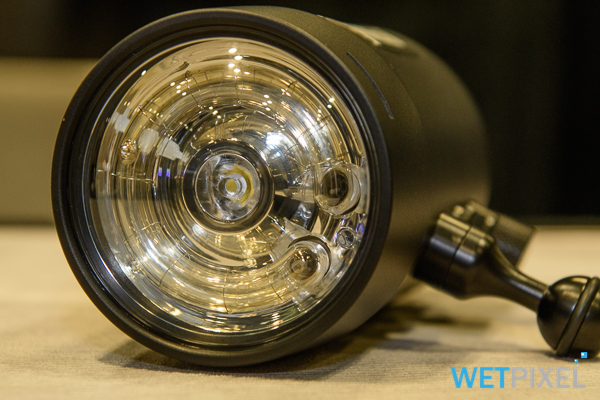
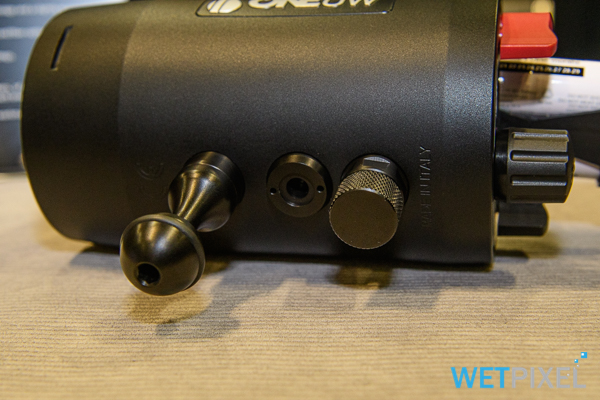
The strobe has a circular flash tube offering 157 Ws of power in a 130° beam. This can be triggered in TTL, manual, and slave modes. The former has 1/3 stops of manual control for plus or minus 2 stops. Manual control has 13 output levels.
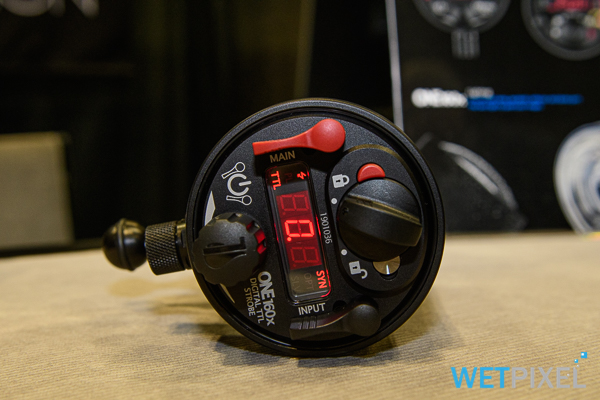
Control is via two levers and a circular knob.
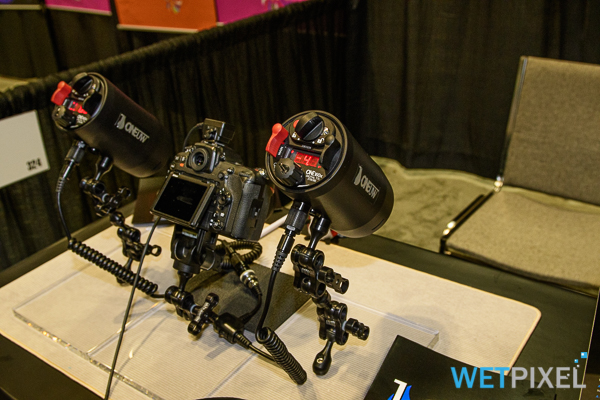
Onboard firmware allows the use of 2 ONE160X strobes with a conventional Nikonos Y cable without a conversion board. Separate strobes can even be switched between slave and TTL modes, and more than two strobes can be triggered simultaneously.
Diffusers are being developed and will be shipping in about one month, and a specific Nikonos Y cable should be available towards the end of 2020. The diffusers attach via grooves in the sides of the strobe.
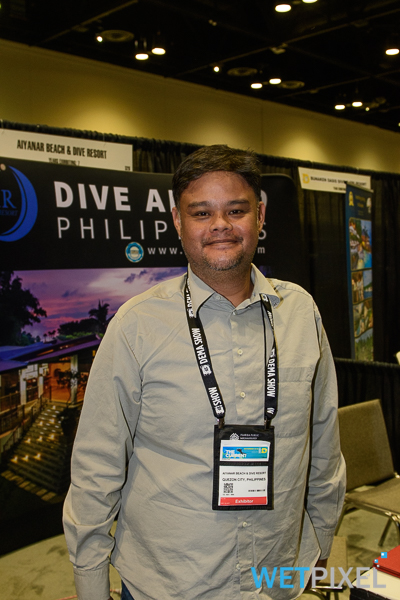
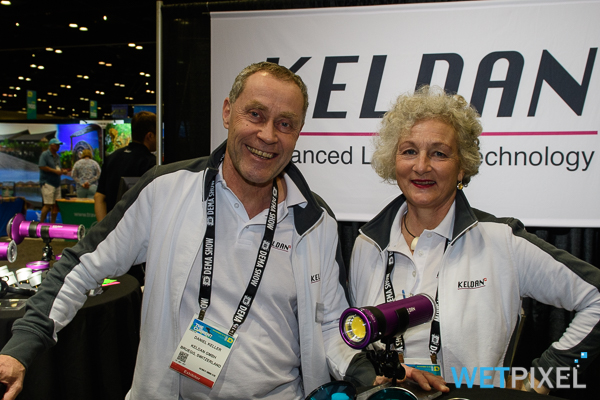
Keldan
Daniel Keller, owner of Keldan lights took me through his product range. His range of color correction filters are now finalised and shipping.
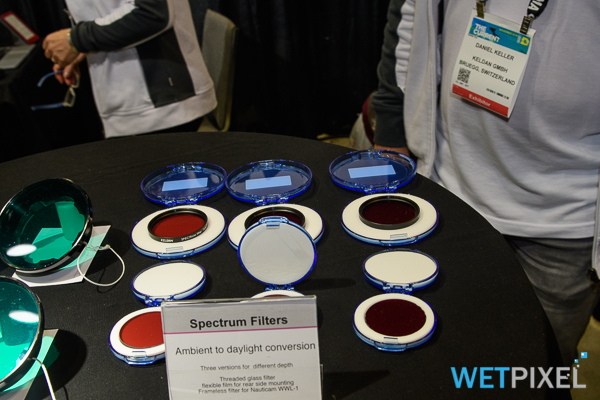
The Spectrum filters are designed to be mounted on the lens or port of the camera and correct the spectrum of light at depth. There is a version that corrects the spectrum to about 4 m shallower than actual and one that does the same for 8m. The 8m version is available in two water colors: Blue and green. There is a gel version of the filter for use on lenses with a filter holder, a screw-on version, and one designed to be used with the Nauticam WWL-1.
Daniel stressed that beyond a certain depth, no filter can truly correct the spectrum as there is simply no red light at all. He suggested that users try and use the “strongest” filter possible to get the best results, but this needs to be balanced with the amount of available light that is needed to achieve correct exposure.
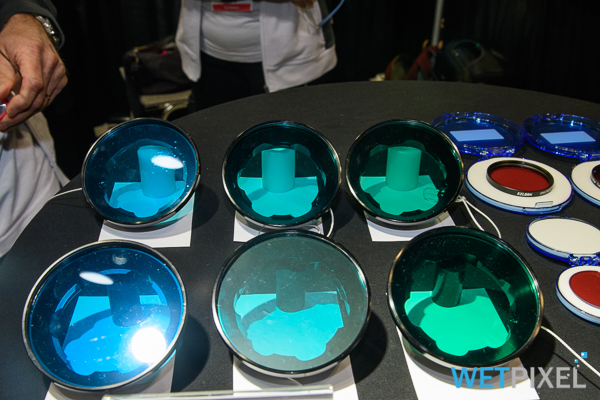
Keldan also offers a range of filters that correct the output of the company’s lights to match that of ambient light. These are available in 6 or 12 m depth strengths and three colors, blue, blue-green, and green.
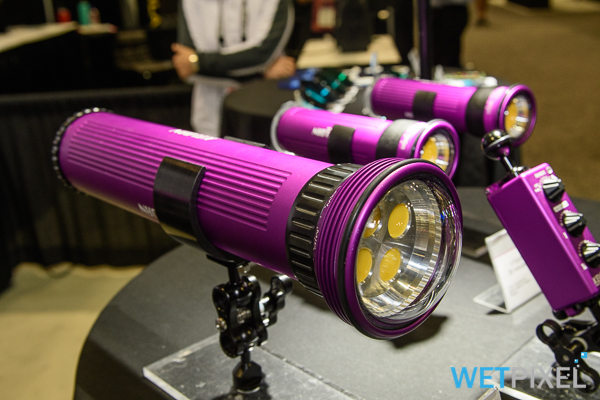
In the New Year, the 24X and 8X video lights will get performance upgrades. The standard 8X will have a CRI of 86, and 17,000 lumen white the high CRI version will have a CRI of 96 and 13,000 lumen. The 24X will have a CRI of 82 and 35,000 lumen.
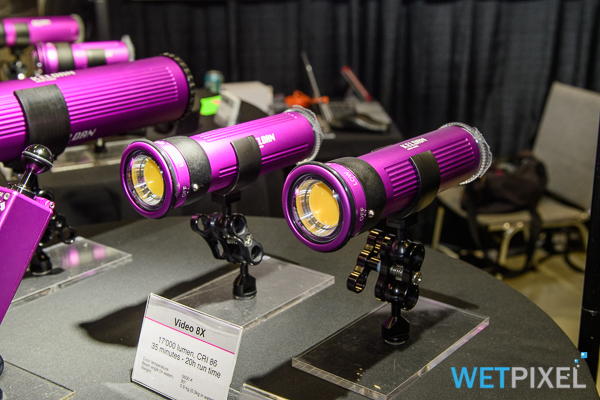
The new sonar-based remote control has been slightly redesigned and will be shipping soon too. It is compatible with the 18 and 24X lights.
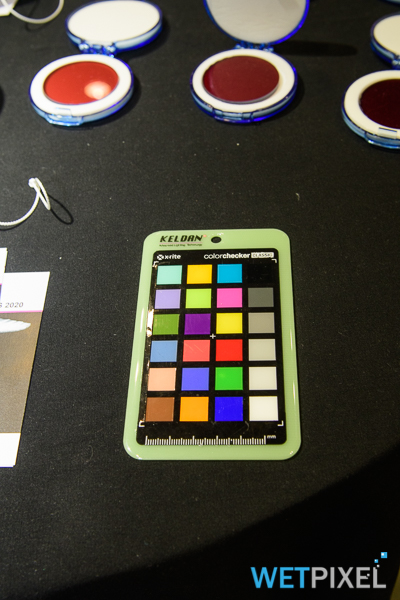
Keldan was also showing a neat color checker (x-rite) color chart that is fully waterproof and has an 18% grey surface on its rear.
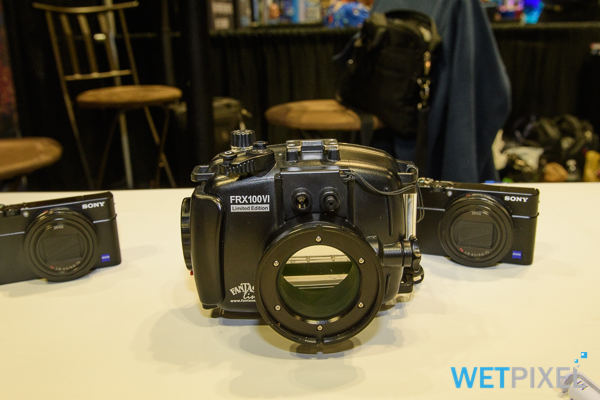
Fantasea
Fantasea has added a large number of new housings since DEMA 2018, and Nadav Rosenstein kindly walked me through the range. The housings are all polycarbonate. Starting with the Sony RX100 family, the FRX100VI housing is compatible with the mark VI and VII models.
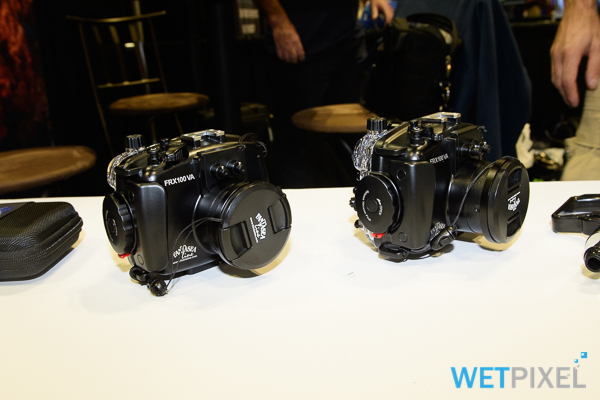
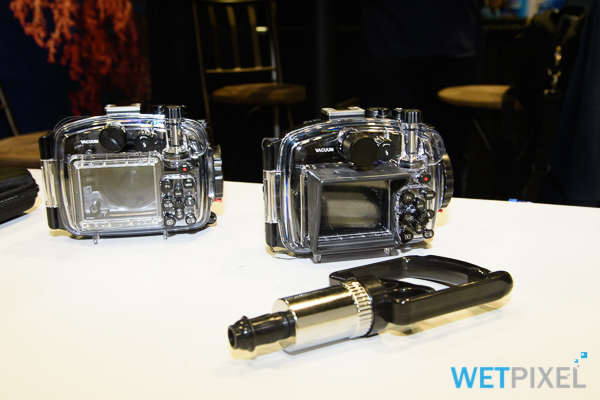
The FRX100VA fits the RX100 marks III, IV, and V versions and is available either with a vacuum bulkhead and system or without.
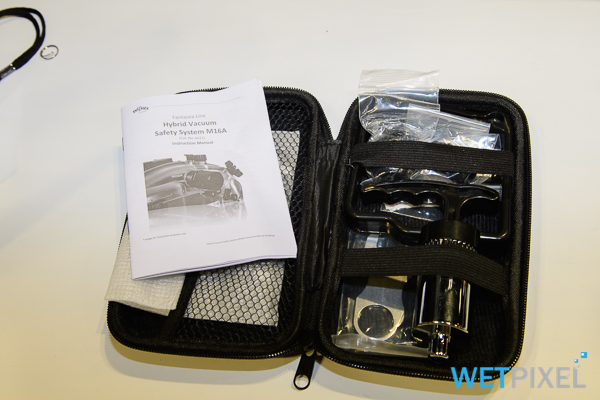
There is also a vacuum kit that can be purchased separately to upgrade the non-vacuum equipped version.
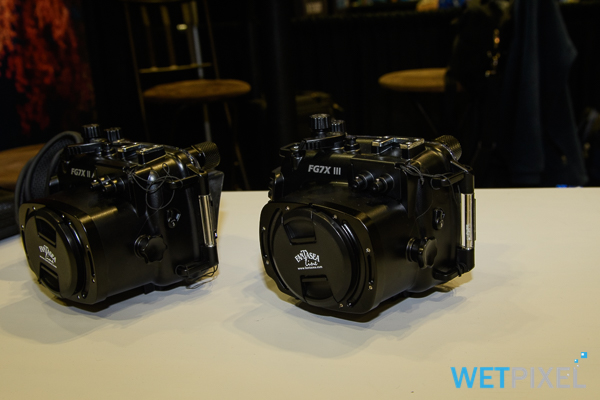
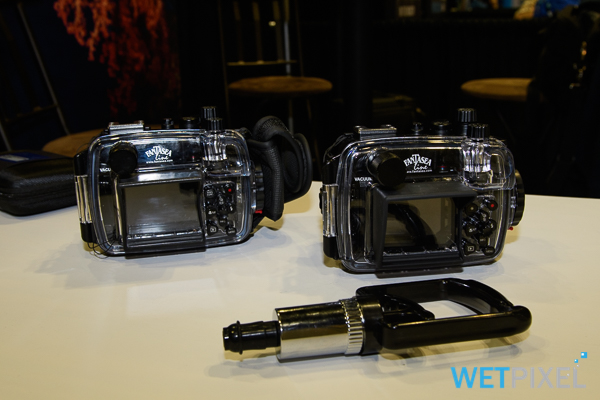
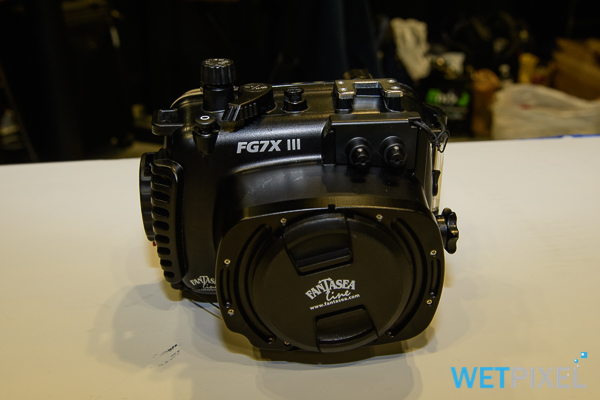
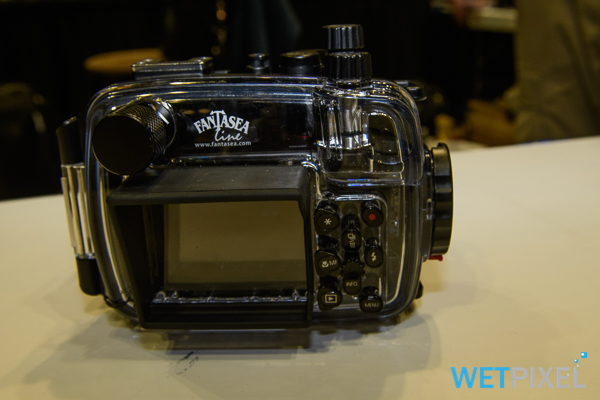
Other housings include versions for the G7X II and the brand new G7X III, both of which are also available with or without the vacuum.
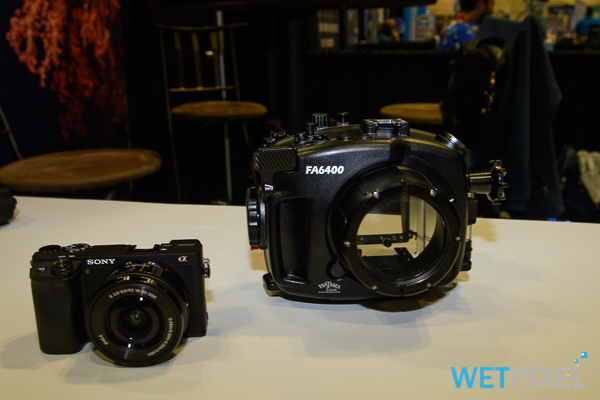

For mirrorless, Fantasea supports the Sony a6400 and A6500, with both housings shipping with vacuum systems as standard. Fantasea also offers a port system, with a flat port, dome, an extension, and a converter that allows the use of Sea&Sea dime ports.
Nadav stated that the company will be releasing a housing for the a6100 in early 2020.
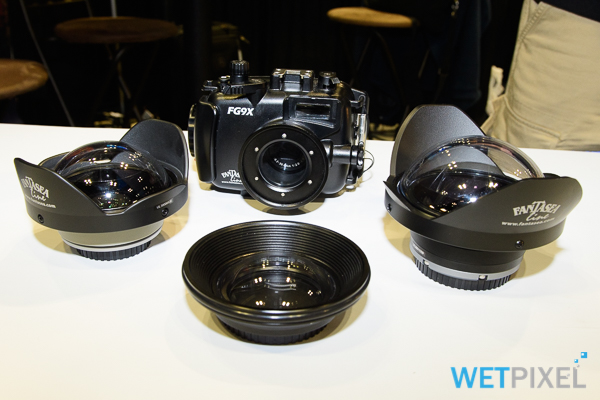
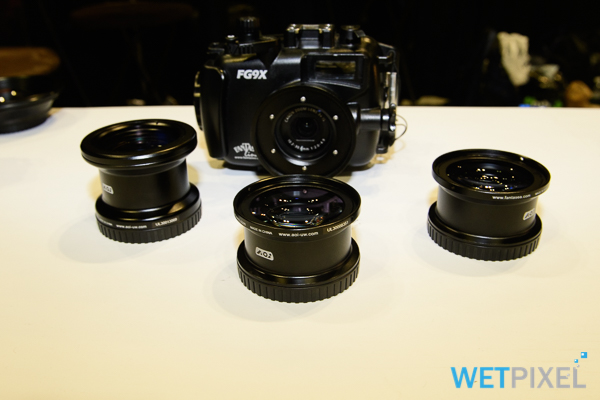
Lastly, Fantasea offers a range of wide angle conversion lenses for compact cameras and macro conversion lenses.
Day 1.
Day 2.
Wetpixel/DPG Party.
Days 3 and 4.